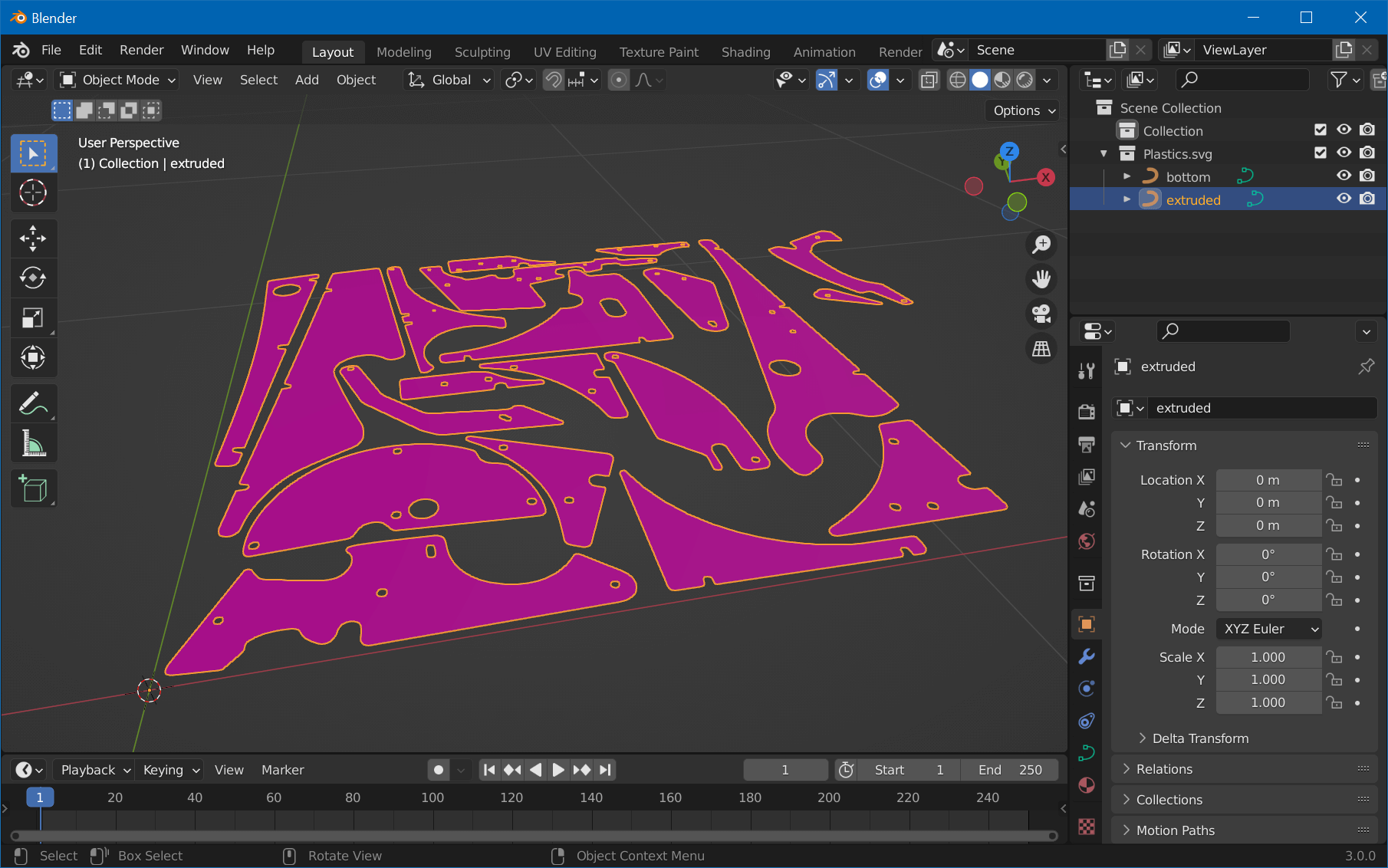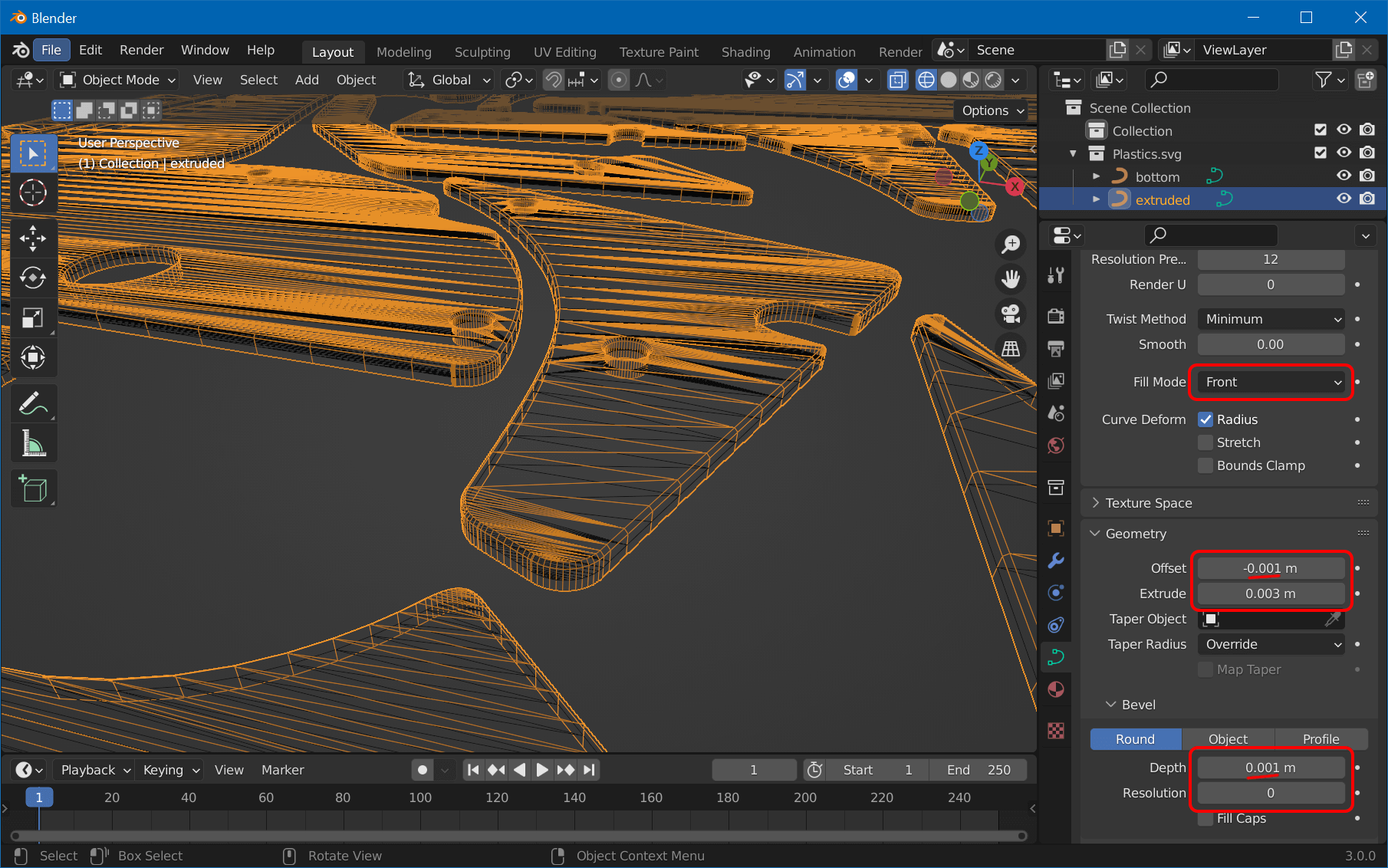Create Mesh
We're now going to import the SVG created in the previous step and create a mesh that is beveled on the top.
Step 1: Import
Open Blender, clear the scene with A, X, Enter. Then, click on File -> Import -> Scalable Vector Graphics (.svg), navigate to where you've saved the SVG in the previous step, select Plastics.svg, and hit Import.
You might not see much due to the imported size. If there were no errors, you should see your imported plastics in the Outliner. Select them and press . on the numpad (not the main keyboard) while hovering over the 3D viewport to zoom in.
Note
You might run into another issue due to the size of the plastics: Camera clipping. To fix that, press N with your cursor over the 3D Viewport, select View and set something like 0.001m for Clip Start.
Your viewport should look like this now:

Step 2: Setup
The way we're going for this is to extrude and bevel our SVG on one side only. This however results in the bottom faces missing. To fix that, we'll duplicate our SVG and use one for extrusion and the other for the bottom mesh.
Before we start, let's make it one single object so we can easily apply everything we do in one step. Select one element, hit A for select all, then Ctrl+J for joining all curves.
Hit Shift+D, Esc to duplicate at the same position. In the Outliner, let's name our objects "bottom" and "extruded":

Step 3: Extrude
Select "extruded" in the outliner and click on the Object Properties tab in the Properties view on the right side. Under Geometry, there is an Extrude field, and a bit below a Bevel section.
Now, the Extrude value is difficult to judge. If you have access to the physical plastics, you can calculate the scale between the real world and the object in Blender by physically measuring the size of a plastic and dividing it by the measured value in Blender. Then, also measure the thickness of the real-world plastic and multiply it by that factor. Personally, I just eyeballed it and ended up with 0.003 m for the Extrude value and 0.001 m for the Bevel Depth.
Then there are three more properties to change:
- We only want to extrude the front, so set Fill Mode to Front.
- We don't want to make the object larger by beveling, so enter the negative value of the bevel depth under Offset.
- Finally, a Resolution of
0will do.
Here are all the non-default options in red:

Step 4: Convert, Join and Clean
As seen in the previous screenshot, our bottom object now sits in the middle of the extruded mesh. Let's fix that by typing G (move), Z (on z-axis only), and the extrude value of the previous step, in our case 0.003, followed by Enter.
Then type A to select all objects, choose Object -> Convert -> Mesh, and hit Ctrl+J to join them all. Finally, clean up the duplicated vertices from the extrusion by hitting Tab for edit mode, A to select all vertices, and choose Mesh -> Clean Up -> Merge by Distance.
Exit edit mode and this is how it should look:

If that's the case, congrats, you're done with the meshes! Maybe now it's a good moment to save your Blender file. Ctrl+S and enter Plastics.blend.
In the next part of this tutorial, we're going to UV-Map them.